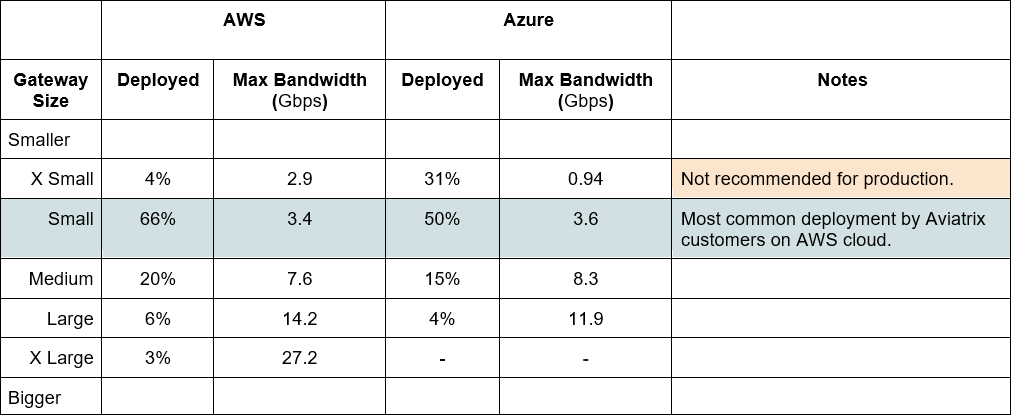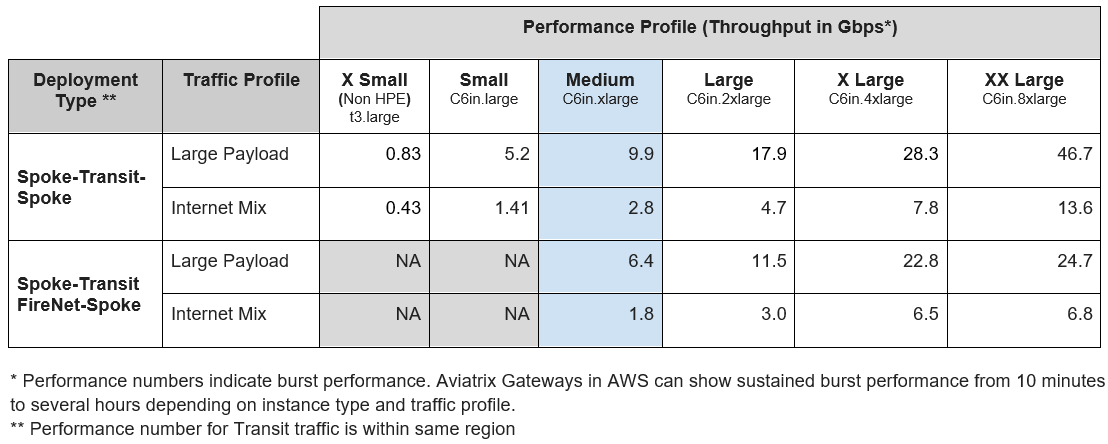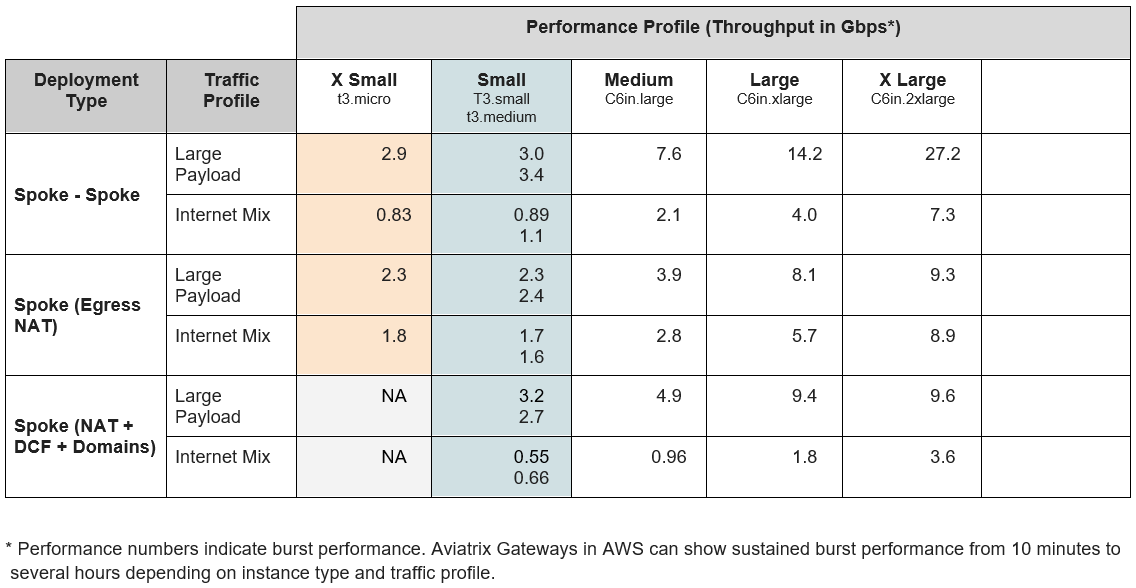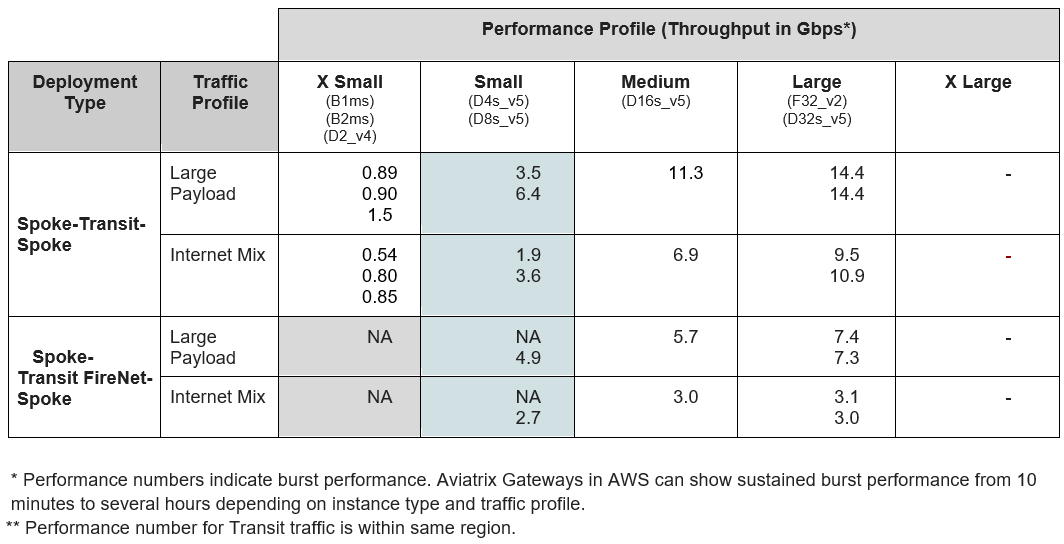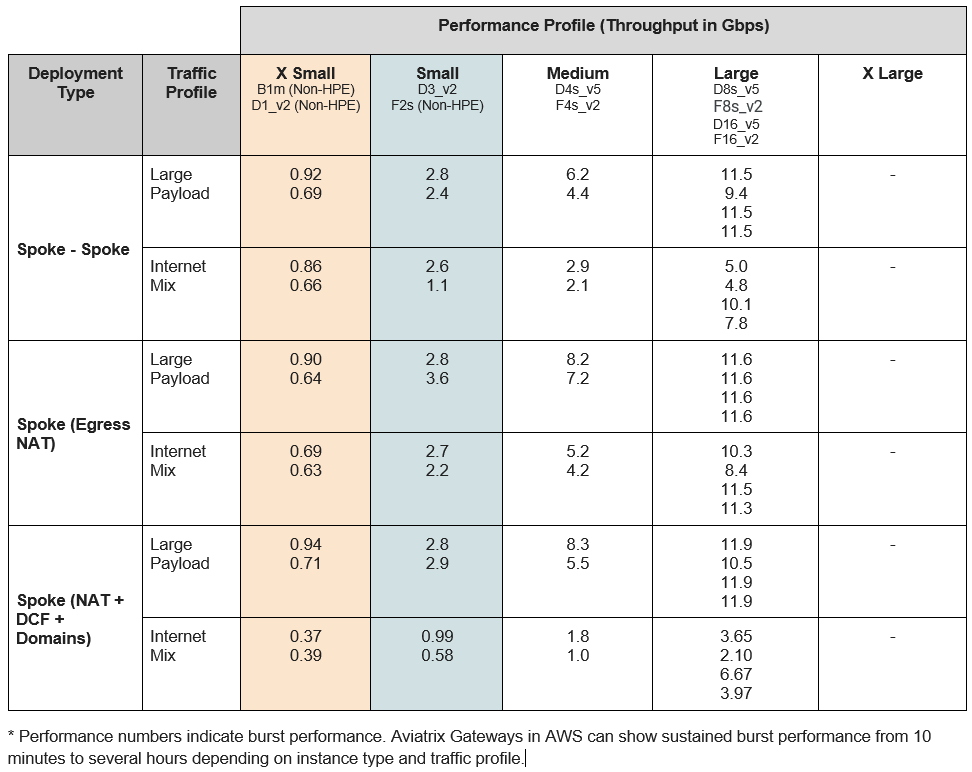Gateway Sizing Best Practices Guide
Although Aviatrix supports a wide array of instance types and sizes in each cloud, this reference guide provides data about gateway sizing and common deployments by other Aviatrix customers to assist you with pre-deployment planning, as well as to help right-size current deployments to maximize cost savings and efficiency.
This data is for guidance purposes only and is based on Aviatrix Controller software version 7.2.4820. Every environment may perform differently.
| The information provided in this document is based on Aviatrix’s internal testing of the Aviatrix solution. Your network will differ from the testing environment used by Aviatrix. Please use this guide as reference only to plan your deployment or drive efficiency in your current deployment. |
Gateway Size Distribution
The following data represents the real-world distribution of Transit Gateway sizes across the Aviatrix customer base. The data is a representation of what Aviatrix customers are using in their own production deployments and will not necessarily reflect the best practice and choice for your network.
Transit Gateways are larger in size because it serves as the hub of hub-and-spoke architecture, terminating multiple Spoke Gateways. That means that Transit Gateways need more IPsec throughput and performance compared to Spoke Gateways, which service only one VPC/VNET/VCN of workloads.
The following tables show data for AWS and Azure cloud.
Bandwidth and Performance
This section focuses on the bandwidth and performance expectations of Transit and Spoke Gateways based on their size.
All the performance numbers are based on Gateways with High Performance Encryption (HPE) unless specified otherwise.
| Gateway performance is impacted by packet size. In our internal testing, a best-case large payload number (which most vendors use) and an Internet Mix (iMix) number of varying packet sizes was used to reflect more real-world performance numbers. |
Use the graphs and tables below as a guideline to determine what gateway sizing is most efficient based on your needs. Consider that the more Spoke Gateways terminating to the same Transit Gateways will impact on the recommended Transit Gateway size. Aviatrix recommends that you monitor the effects of sizing after deploying a new gateway or resizing a current one prior to resizing again, to ensure there will be no traffic impact.
The graphs are a visual representation of the data in the tables. Use the graphs to visually compare the data in the tables to understand specific numbers.

